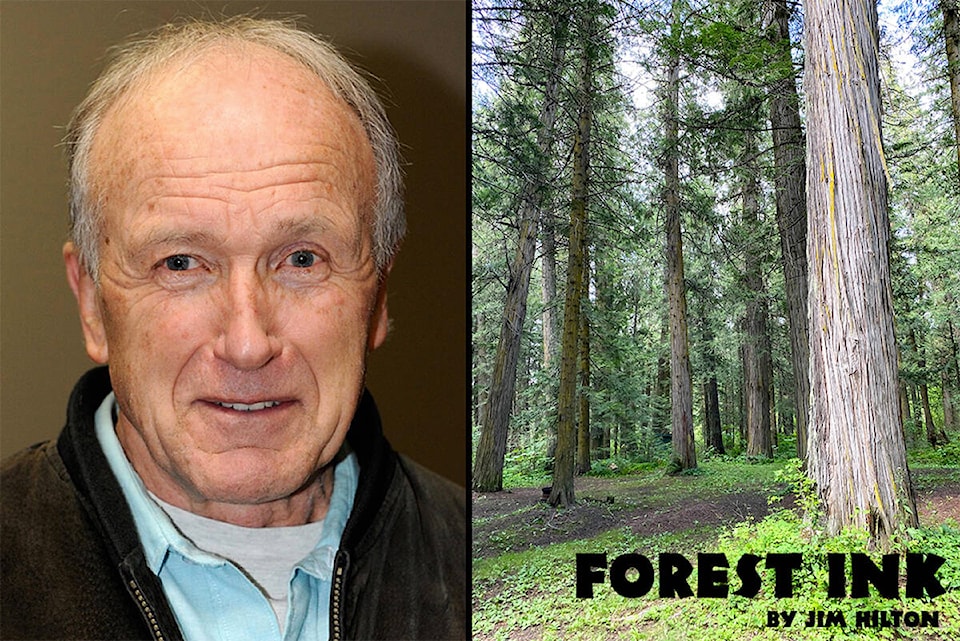My wife purchased the Power of Trees by Peter Wohlleben, a relatively small book (271 pages), from the local book store after hearing about it on a CBC radio program. The main theme of the book is described in the extended title “ How Ancient Forests Can Save Us If We Let Them.” In his previous book “The Hidden Life of Trees” the author describes the social networks of trees and how they communicate. In this book his plea is to trust ancient forests so that together we may survive and thrive together. He also spends some time pointing out that many traditional foresters, politicians and business leaders claim that cutting down trees can be offset by mass planting but warns that they are often more prone to disease, fires and other ecological disasters compared to old naturally established forests.
Peter runs a forest academy in Germany where he has studied beeches, oaks and chestnuts and how they have been impacted with drought during 2019 to 2020. Ancient beech forests respond to drought by dropping leaves early. Ancient oak trees in a wildlife park near Ivenock often have rotten centres (making it difficult to determine ages) but are still healthy and one tree had a volume of 180 cubic meters 360 times the average tree in the country.
Scientists theorize that the oaks probably originated in southern countries like Spain and are genetically able to cope with the warmer conditions. Swiss scientists are looking at the ability of native stands to use water more efficiently than their harvested coniferous stands. Holy Halls one the of the oldest beech forests (300 years) which has had no logging for over 150 years has shown summer temperatures similar to the lakes (19 C). Compared to most of Berlin temperatures which are around 33 C, pine plantations were 8 C warmer than the ancient forests. Some industrial areas are much hotter than the surrounding forests. A recent controversy over the harvesting of the Hambach forest so a coal mine could be expanded. In 2018 the mine area was 20 C higher than the adjacent forest which was unfortunately dying because of the adjacent mine activities.
The author is concerned about the large commercial forests which consist of introduced spruce, pine and fir. Many stands have been dying from insects, heat waves and other stresses. While scientists search for more robust coniferous species, the native deciduous forests seem much more capable of dealing with the extreme weather patterns. Unfortunately the number of native forests is very small and are still being considered for commercial harvesting with the usual loss of jobs as the justification.
Germany was attempting to return coniferous plantations to more natural stands but inventories in 2012 showed beeches and oaks were only 15 and 10 percent respectively but recent stands less than 20 years old were only 12 and six percent respectively.
The author proposes using a new term “wilderness” as a way to describe protected areas rather than nature preserves and natural which after years of attempts at preservation have only resulted in a few percent of natural deciduous forests remaining.
While the German and European old deciduous stands may be similar to eastern Canadian deciduous forests there may be some basic principles about ancient forests that could apply to B.C.’s mainly coniferous ecosystems. For example there is a chapter about Swiss scientists who have been studying how different forests are able to capture, store and efficiently use the water supplied throughout the seasons. I would like to deal with this and other topics in future articles as it relates to climate change.
READ MORE: FOREST INK: Value-added producers at Medieval Market in Williams Lake
READ MORE: FOREST INK: Long-term, positive results using an organic approach
Do you have a comment about this story? email:
editor@wltribune.com
Like us on Facebook and follow us on Twitter.
